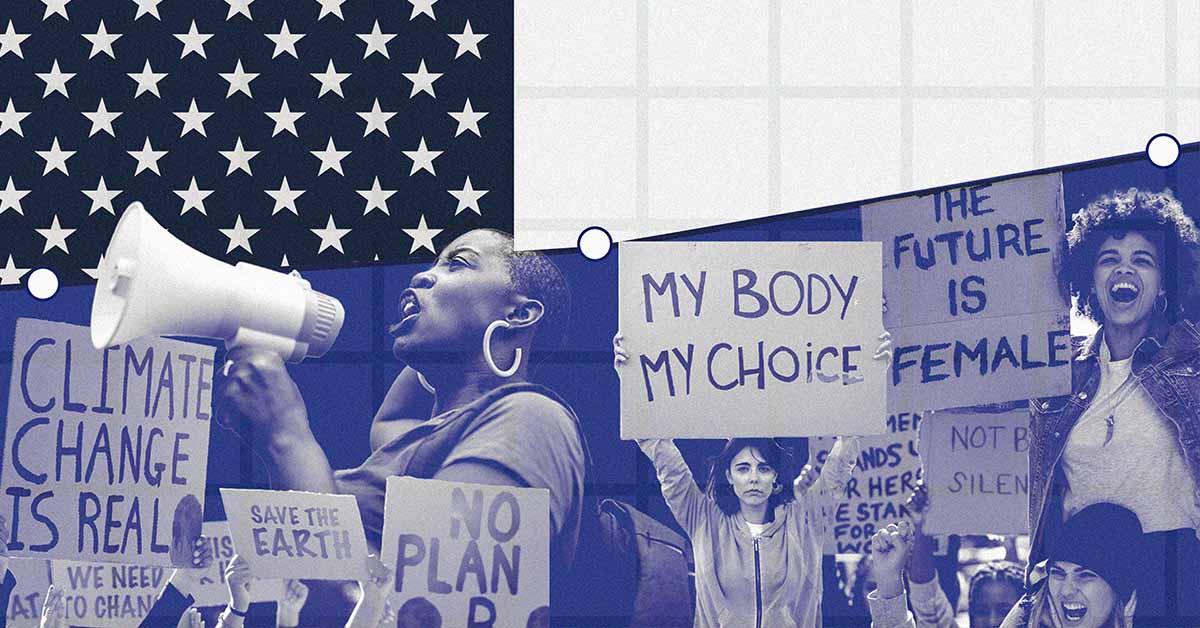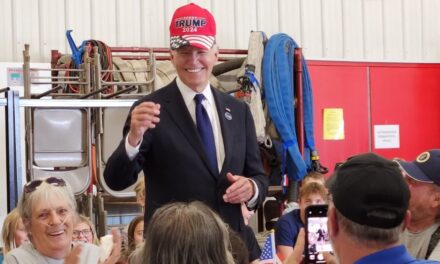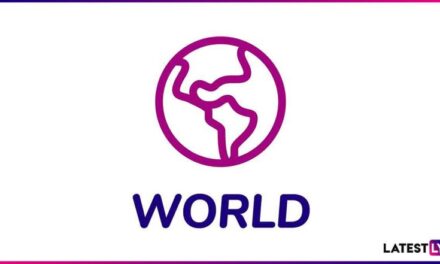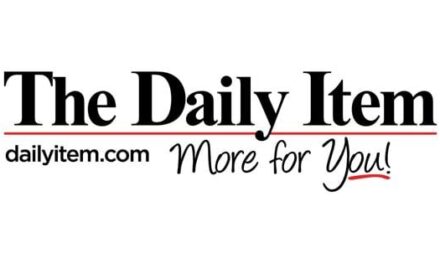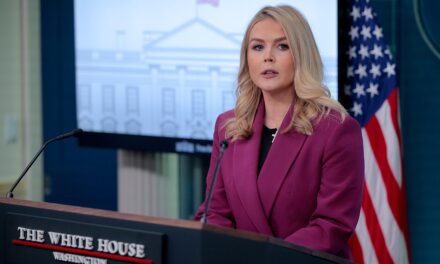
WASHINGTON, D.C. — A surge in young women who identify as politically liberal in recent years goes beyond the label, extending particularly to their stances on the environment and abortion. It is also strongly echoed in their heightened unease with gun laws and race relations.
According to a new Gallup analysis, much higher proportions of 18- to 29-year-old women today than women of this age range about a decade ago hold the prevailing liberal perspectives on these four issues.
Young women’s stances on several other issues — including the death penalty, healthcare policy, labor unions, taxes, government regulation and the Israeli-Palestinian conflict — have become moderately more liberal, while their views on defense spending and a few others show little change. Young men have also moved closer to the liberal positions on most issues, just not as markedly as young women have.
These findings are based on a review of more than 50 Gallup trends — 24 measuring Americans’ policy preferences on specific issues, 11 measuring their satisfaction with U.S. conditions in different realms and 19 measuring how much they worry about many of these same areas. The analysis groups yearly results for each measure into three multiyear time periods to allow for reliable estimates of the views of 18- to 29-year-old men and women. It then contrasts these groups’ views with those of men and women 30 and older.
The analysis also looks at whether the increasing proportion of women enrolled in higher education relative to men explains the recent surge in young women’s identification as politically liberal. However, for most variables reviewed, gender is the key predictor of attitudes, not educational attainment.
One of These Trends Is Not Like the Others
From 2001 to 2016, women aged 18 to 29 were more likely than their male counterparts as well as older men and women to identify as politically liberal. However, as Gallup has reported previously, a recent jump in young women’s liberal identity, not matched by the other groups, has widened the gaps, particularly with young men.
The three periods used throughout this analysis to summarize Gallup’s trends capture successive increases in young women’s liberal identity since the start of the 21st century.
- In the first period, from 2001-2007, an average of 28% of women aged 18-29 identified as liberal, three percentage points higher than young men. This period coincides with most of George W. Bush’s presidency, an era dominated by the aftermath of the 9/11 terrorist attacks, including the Iraq War.
- In the second period, from 2008-2016, an average of 32% of young women identified as liberal, five points higher than for young men. This period coincides with the political era featuring Barack Obama — first as a Democratic candidate for president and then as president.
- In the third, from 2017-2024, an average of 40% of young women identified as liberal, 15 points higher than for young men. This period coincides with the presidencies of Donald Trump and Joe Biden, as well as a record increase in women — mostly Democratic — elected to Congress, governorships and state legislatures.
These three periods essentially show how the views of 18- to 29-year-olds have changed over the past two decades, with — in varying proportions in each period — Gen X, millennials and Gen Z mostly constituting the young adult subgroup.
###Embeddable###
For the remaining analysis, this article will focus on changes in young women’s views on specific policy or cultural matters, to see if these align with — or shed light on — the recent increase in liberal self-identification among young women. The analysis mostly compares changes between 2008-2016 (effectively the Obama era) and 2017-2024 (the Trump/Biden period), when young women’s identification as politically liberal increased the most.
Because the latest period encompasses eight years, this analysis does not offer precise estimates of young women’s current views but is intended to identify issues that may help explain the surge in their liberal identity since the Obama era. These issues, in turn, could account for the widening of the gender gap in young adults’ self-professed political ideology.
On Average, Young Women Growing More Aligned With Liberals; Young Men, With Moderates
To quantify how young women’s views have changed, and how this compares with the views of young men, a statistical analysis was performed using the Gallup database of 54 issue-related questions. The percentages of young women and young men giving liberal-leaning responses to these questions were calculated for each time period and, for reference, these scores were then compared with the scores among conservatives, moderates and liberals aged 30 and older.
In 2001-2007, young women’s views were closer to those of liberals aged 30+ than conservatives 30+ on 63% of the issues reviewed. This increased to 78% in 2008-2016 and 87% in 2017-2024. Separately, the analysis shows that young women’s views also moved closer to liberals and further from moderates, with their more-liberal-than-moderate responses rising from 33% in the Bush era to 55% in the Trump/Biden era.
The same analysis applied to young men shows far less change in their ideological proximity to older liberals, moderates or conservatives than is true for young women. In 2001-2007, young men’s views aligned with liberals aged 30+ more than conservatives 30+ on 47% of the issues reviewed. This increased to 57% in 2008-2016 before sliding back to 50% in 2017-2024. In other words, on the whole, young men’s views have been slightly more liberal in the Trump/Biden period than they were in the Bush era, but less liberal than during the Obama era. This echoes young men’s lesser likelihood of self-identifying as politically liberal between 2017 and 2024 (25%) than between 2008 and 2016 (27%). The stability of young men’s political ideology suggests other issues or factors not reviewed here may be more important to their overall political identity.
Meanwhile, the percentage of young men’s views that are closer to those of liberals than moderates was just 24% in 2001-2007 but shrank to 17% in 2008-2016 and remains low, at 19%, in 2017-2024. Essentially, young men’s views have been much closer to moderates’ than to liberals’ views throughout the past quarter century.
###Embeddable###
A Sharp Left Turn in Young Women’s Policy Preferences
While the above statistics summarize how young women’s ideological positions on the issues have changed overall, it is also important to understand their shifting views on specific issues.
For this, Gallup reviewed 24 questions from its trends archive that measure Americans’ beliefs or positions on widely debated policy-related issues, and that Gallup has asked frequently enough to produce sufficient sample sizes of young men and women across the three periods. The available questions assessing each issue use a variety of question-and-answer formats, making it difficult to know precisely which issues may have been most influential to young women’s heightened liberal identity. However, differences in the magnitude of changes in young women’s views could indicate the relative importance of the issues.
On five of these, the percentage of young women holding the liberal position has increased by more than 15 points. These have to do with the environment, abortion and gun laws.
- After showing no change between the Bush and Obama eras, the average percentage of young women saying human activity is responsible for global warming jumped 20 points to 86% in the Trump/Biden period.
- Similarly, since the Obama era, young women have become 19 points more likely to choose protection of the environment over economic growth when asked which goal should be prioritized. Seventy-eight percent now hold this view, up from 59% in 2008-2016. When asked about government’s role in protecting the environment, young women have become 18 points more likely to believe the U.S. is doing too little in this regard (rising from 62% in 2008-2016 to 80% in 2017-2024).
- Young women have become 18 points more likely to support broad abortion rights, saying abortion should be legal under any or most circumstances (rather than in only a few or no circumstances). Their preference for this position rose from 42% to 60% between 2008-2016 and 2017-2024.
- They have become 16 points more likely to say gun laws should be stricter (rising from 58% to 74%).
Notwithstanding their slightly lower liberal self-identification, young men have also become more likely to hold the liberal positions on these issues, but the increases have been smaller. As a result, the associated gender gaps between young women and men have widened substantially.
###Embeddable###
Meanwhile, young women have become 10 to 15 percentage points more likely to embrace the liberal-leaning positions on questions about the death penalty, doctor-assisted suicide, the Israeli-Palestinian conflict, the legalization of marijuana, the government’s role in guaranteeing healthcare coverage for all, their overall abortion stance, support for labor unions, immigration levels and the legality of same-sex marriage.
Young women’s views have shifted to the left, but by less than 10 points, on corporate and upper-income taxes, business regulation, prioritizing the environment over energy production, the moral acceptability of embryonic stem-cell research, defense spending, support for an independent Palestinian state and banning handguns between the Obama era and Trump/Biden periods.
Again, the changes in young men’s views have been more muted, often lagging behind women’s by 10 or more points in the increased liberal percentage, or not changing to a significant degree in the case of issues where young women became only moderately or slightly more liberal.
###Embeddable###
The difference between the amount that young women’s and young men’s support for liberal positions on issues has increased in recent years contrasts with more comparable changes seen between women and men aged 30 and older. Both groups of older adults became slightly more likely to identify as liberal, overall, and it’s the rare issue where support for the liberal position didn’t increase as much among men as it did among women.
###Embeddable###
The percentages of young women and men holding each issue position at each time period, as well as the figures for women and men 30 and older, are available upon request.
Women Also Markedly Less Content With Conditions in Some Areas
Additional insights into how young women’s political priorities may have changed in recent years are provided by Gallup’s annual measurement of Americans’ satisfaction with 11 aspects of the country. Gallup data show that liberals are typically much more concerned than conservatives are about each of these.
Mirroring the top three policy issues on which young women have moved to the left, young women have grown much more dissatisfied in recent years with gun laws, the quality of the environment and abortion policy. They are also significantly more discontent with race relations. This is evidenced by increases of about 20 points in the percentages saying they are “very dissatisfied” with each.
Young women’s dissatisfaction with healthcare, poverty and homelessness, and issues related to corporations has risen more modestly. There has been no meaningful change in young women’s dissatisfaction with income and wealth distribution, what Americans pay in taxes, and the acceptance of gays and lesbians, while they have become less dissatisfied with immigration.
Young men’s views have changed far less than young women’s on most of these satisfaction items, suggesting less intensity of feeling on young men’s part about the issues.
###Embeddable###
Again, the differences in recent shifts in policy positions expressed by older women are generally much smaller than those of younger women. However, race relations is an exception, as strong dissatisfaction has increased as much among women aged 30+ (18 points) as among women aged 18 to 29. As for men, dissatisfaction with these aspects of the country has increased at least as much, if not more, among older men as among younger men on most of these items.
###Embeddable###
Surge in Young Women’s Concern About Race Relations Outpaces Other Issues
Separately, each March, Gallup measures the amount Americans worry about a variety of issues as part of its annual Environment survey. This includes 13 domestic issues rated in a question focused on broad national policy areas and six specific environmental issues included in a different question focused on environmental policy.
Young women have grown more concerned about race relations since 2008-2016 than about any other broad aspect of the country rated. The 24-point increase in those worried a great deal about this is more than double the increase in concern about the quality of the environment (+11) and three times their increased concern about hunger and homelessness (+8). At the same time, their concern about drug use, healthcare, illegal immigration and terrorism hasn’t changed, while they harbor less concern about crime, Social Security, energy supplies, and several aspects of the economy.
Young women have grown much more concerned about most of the environmental issues rated, including global warming (up 22 points), the extinction of animal or plant species (+20) and loss of tropical rain forests (+16). Their concern about air pollution hasn’t changed.
Meanwhile, young women have become moderately more concerned about the quality of the environment, generally (+11), pollution of waterways (+11) and pollution of drinking water (+10). They have grown only slightly more concerned about hunger and homelessness (+8).
Young men also show increasing concern about race relations, the quality of the environment, and hunger and homelessness, but to a lesser degree than young women do. When it comes to specific environmental issues, young men’s concerns have not shifted or have shifted only marginally compared with the bigger jumps seen among young women.
Similar to the trends among young men, young women have been less concerned in recent years than in 2008-2016 about Social Security, energy, unemployment, the federal deficit and the economy.
###Embeddable###
Older women are also more likely than their male counterparts to have grown more concerned about race relations in recent years, with the percentage worried a great deal increasing 22 points, versus 15 points for older men. But their concern about all other issues measured has changed at about the same rate.
###Embeddable###
The Political and Social Context for Young Women’s Identity Evolution
Aligning Gallup’s annual trend in young women’s liberal identification with major news events that occurred each year suggests that the political and cultural environment had little impact on young women’s politics from 2001 through 2014. Although there were significant news events concerning the environment and healthcare, as well as mass shootings and an emerging focus on young Black men being killed by police, the percentage of young women identifying as liberal showed little change from one year to the next. Rather, it increased gradually, and unevenly, from an average 28% in the Bush era to an average 32% during the Obama era.
However, in 2015, young women’s liberal ID rose above 32% for the first time, to 34%, and it’s gradually increased to 41% in the first half of 2024. This spans the Supreme Court’s legalization of gay marriage in its 2015 Obergefell v. Hodges decision, Donald Trump’s emergence as the leading Republican political figure in 2015 and Hillary Clinton’s nomination for president in 2016, a landmark event for women.
Since then, the country has experienced Trump’s first year in office in 2017, during which the #MeToo movement against sexual abuse gained prominence; a record number of women being seated in Congress in 2019; the 2020 coronavirus pandemic and presidential election; the overturning of Roe v. Wade by the Supreme Court in 2022; and another presidential election featuring Trump, in 2024.
Whether one or more of these events, or numerous others that have taken place since 2015, are responsible for the rise in young women’s liberal identity isn’t evident from the data, but something has clearly prompted a change. It is also possible that Americans’ increasing use of social media as a news source has influenced young women differently than it has others. Two factors that don’t seem explanatory are education and racial or ethnic diversity.
###Embeddable###
Young Women More Liberal Regardless of College Status
The role of education in these trends is limited. In general, college-educated adults — those who have graduated from or have attended some college — are more likely to identify as liberal and hold liberal views on issues than are adults who have not attended college. However, the percentage of women attending college has been relatively constant, at around 60%, over the three time periods reviewed for this analysis. So, it cannot be said that women have become more likely to identify as politically liberal because they are more likely to be attending college.
Throughout the time periods reviewed, college-educated women have been consistently more liberal than women with no college education. However, since 2008-2016, both groups have become more likely to identify as politically liberal, and to a similar degree — up eight points among women who have attended or graduated from college, and nine points among young women with no college experience. For their part, young men have become slightly less likely to identify as liberal, regardless of their college experience.
Meanwhile, liberalism has increased more modestly — by just two to four points — among college-educated and less-educated women 30 and older.
###Embeddable###
Still, college-educated young men have been consistently more likely than their noncollege counterparts to identify as liberal. Thus, the fact that fewer young men (46%) in 2017-2024 were attending college during that period than was the case for young men in 2008-2016 (53%) may be contributing to the slight decline in young men’s liberal ID.
###Embeddable###
Cultural Diversity Not a Factor in Growing Liberalism Among Youth
Today’s young adults are more racially and ethnically diverse than their predecessors, which might seem like a contributing factor to increased liberalism among this age group. However, across time, the gap in liberal identification between White women and women of color has remained one to two points, and the same consistency is seen for White men and men of color, with a four- to six-point gap.
More research needs to be done on how the two groups differ on policy issues, but at least in terms of their basic ideology, cultural diversification does not appear to be driving the rise in liberal identity among young women. Liberal identity has increased by eight to nine points among White women as well as women of color between the Obama and Trump/Biden eras, while it has decreased slightly among both groups of young men.
###Embeddable###
Implications
Young adult women in the U.S. today have not simply embraced the “liberal” label to a much greater extent than previous cohorts of young women, but they are more likely to hold liberal positions on specific policy issues. Their particularly strong adoption of more liberal positions on the environment and abortion, and their heightened concern about race and gun policy, could indicate these issues have had an outsized influence on their broader political identity.
Still, despite the political salience of these issues for over two decades, only in the past few years has young women’s identification as liberal taken off, creating a major gap between them and young men as well as older women. The timing relative to real-world events suggests that either the nature of the issue debates has changed or other developments during this period have served as catalysts for turning young women’s underlying liberal tendencies into a greater willingness to wear the label.
Examples could be young women reaching a tipping point on gun violence from the cumulative effect of mass shootings, or reaching a similar tipping point on race relations after George Floyd’s killing in 2020. Looking beyond issues, Donald Trump’s presidential campaigns and term in office could have also played a role, as could the emergence of several prominent young women on the national stage. Having Democratic leaders like Rep. Alexandria Ocasio-Cortez advocate for the “Green New Deal,” Gen Z activist Greta Thunberg make the case for taking action on the environment, and social media influencer Olivia Julianna fight for reproductive rights in Texas may serve as political North Stars for many young women. In totality, these events are at least part of the environment in which the latest cohort of young women have learned about politics and decided what issues matter to them, helping to shape their distinct attitudes.
The fact that young men have resisted the liberal label despite becoming more liberal in many of their specific views supports the idea that a peripheral factor is influencing how young women, but not young men, define their politics. Either way, the consolidation of young women’s liberal identity could make them a potent political segment in this year’s election. It makes them an important bloc for Kamala Harris to turn out to vote, and therefore, one Donald Trump can’t completely ignore, in their respective attempts to win the presidency in November.
To stay up to date with the latest Gallup News insights and updates, follow us on X @Gallup.
Learn more about how the Gallup Poll Social Series works.
Jonathan Rothwell, Ph.D., contributed analysis to this report,
###Embeddable###
